Located at the intersection of St Vincent Street and Commercial Road, ‘Black Diamond Corner’ was for many years a notable Port Adelaide landmark. The name is thought to have originated in the 1870s in association with the Black Diamond shipping line, and by the beginning of the twentieth century was synonymous with the commercial heart of the Port. Development around Black Diamond Corner continued apace during the first decades of the twentieth century and, with an associated increase in the use of motor vehicles within the Port, it soon earned a reputation as a traffic nightmare. Consequently, the first of three signal pillars (known colloquially as ‘silent cops’) were erected at the intersection in 1924, and remained in use until the installation of traffic lights in 1968.
Origins: The Black Diamond Line
The origin of the name ‘Black Diamond Corner’ has been a topic of debate among Port Adelaide residents for many years, although it is commonly accepted that it can be traced back to a shipping concern known as the Black Diamond Line of Colliers (or, more commonly, the ‘Black Diamond Line’). Founded by merchant Henry Simpson in the late 1850s, the Black Diamond Line employed a variety of sail- and steam-driven vessels to transport coal from the New South Wales port of Newcastle to South Australia, where it fuelled mines and smelters in the latter’s copper producing regions. In an odd twist, the Black Diamond Line was never officially incorporated as a business and earned its name through association with coal (which was often given the nickname ‘black diamond’ because of its significant economic value) and South Australia’s burgeoning coal importation industry. Simpson would later adopt the nickname and order the funnel of each of his steamships emblazoned with a black diamond motif.
By the late 1860s, the Black Diamond Line operated from premises on Currie Street in Adelaide. A small office was also located in Port Adelaide at the corner of St. Vincent Street and Commercial Road, and it was from here that Simpson’s vast coal stocks at nearby Queen’s Wharf were managed. The Port Adelaide office was also responsible for managing the Black Diamond Line’s fleet of hulks, which supplied stocks of coal to local steamships and locomotives, as well as the Port’s new gas lighting system. It is around this time that the name ‘Black Diamond Corner’ may have been first applied to the adjacent intersection.
The Black Diamond Hotel
Another explanation for the name is the presence of the ‘Black Diamond Hotel’ at the corner of Commercial Road and St. Vincent Street in the late 1870s and early 1880s. During this period, the intersection was occasionally dubbed ‘the Black Diamond corner’ in local newspapers—almost certainly in reference to its proximity to the hotel. The lease to the building, which originally operated as the White Horse Cellars Hotel and later the Family Hotel, was acquired by Captain Duncan Reid in 1878. Reid was a former employee of Henry Simpson and commanded a number of Black Diamond Line vessels, including the brigantine Exonia. He changed the establishment’s name to the Black Diamond Hotel and operated it until 1884, when it changed hands yet again and was renamed the Central Hotel. The building still stands and until recently operated as Buff’s Black Diamond Hotel.
A Notorious Intersection
By the second decade of the twentieth century, Black Diamond Corner had become a common placename and point-of-reference for Port residents. It also developed a reputation as a dangerous intersection, particularly as the amount of motor traffic present within the Port increased. On any given day, an assortment of pedestrians, bicycles, horse-drawn vehicles, electric trams, and auto-mobiles had to cross Black Diamond Corner, and without a means of regulating traffic, accidents became increasingly more common.
In an effort to mitigate the problem, the first ‘silent cop’ was installed at the centre of the intersection in March 1924. Intended as a means of traffic control, the silent cop was little more than a wooden post that stood 5 feet, 6 inches (1.7 metres) tall. It was capped by signs with the words ‘Keep Left’ painted in white on a red background. One sign faced each of the four oncoming lanes and indicated to drivers which side of the post they should pass. The top of the marker also featured an electrically-powered red lamp that was lit after dark. The first silent cop was accidentally destroyed by a car eight months later and replaced by a 5-foot (1.5-metre) concrete plinth. All four of the plinth’s faces were painted with the words ‘Keep Left’, and it too was outfitted with a top-mounted electric light as a means of illumination. The light was directly wired into one of the electric tram cables that passed above the intersection.
In 1926, the silent cop was modified slightly to make it more visible and understandable to drivers. It now featured a two-tone paint scheme and the words ‘Keep to the Left’ on each face, as well as a stylised hand pointing in the correct passing direction. Despite these measures, accidents continued to occur. In October 1929, an elderly man on a bicycle was struck by a car while passing through the intersection, but thankfully only suffered minor injuries. The reason for the accident is not recorded, but may have been a consequence of the silent cop being obscured by revolving advertising boards, which by 1929 were being placed directly on the plinth!
Black Diamond Corner was officially acknowledged as a safety hazard by Port Adelaide Police Inspector JR Johns in 1938, and recommendations for ‘lessening’ the danger it presented were submitted to the Port Adelaide City Council in September of that year. Foremost among the suggested changes was installation of an improved silent cop that was significantly larger and more visible than its predecessors. Designed by local policeman ‘Scan’ Sutherland, the new concrete structure was erected in 1939 and featured a multi-sided pillar painted with alternating black and white lines in a zigzag pattern. Each face of the large, multi-sided base upon which the pillar was mounted was emblazoned with the alternating words ‘Keep’ and ‘Left’. These were rendered in large, black capital letters on a white background. Large black arrows indicating the correct traffic direction were painted immediately beneath each ‘Keep Left’ motif, as was an additional line of smaller, alternating black and white arrows. Like its predecessors, the new marker was topped with an electric light that illuminated it at night.
Despite the silent cop’s improved design, accidents continued to occur with alarming regularity at Black Diamond Corner. In the same year it was installed, a 17-year-old girl was knocked from her bicycle by a motorist as she attempted to pass through the intersection. The girl was treated for shock and abrasions, and ultimately made a full recovery. During the late 1940s, the number of serious accidents at Black Diamond Corner increased significantly, likely as a consequence of a rise in the number and diversity of motor vehicles being used in the Port. In February 1947, three women were injured when the bus on which they were riding collided with a truck. Two years later, a man riding a bicycle was struck and killed instantly by a loaded timber truck, and a male pedestrian was left with a concussion when hit by a bus. In June 1951, detergent was placed around the silent cop in an effort to rid the surrounding roadway of slippery oil deposits that had resulted in 19 motorcycle accidents over a three day period. The measure was repeated in July 1953 following a record 10 motorcycle accidents at Black Diamond Corner on a single night. Curiously, the intersection’s poor safety record appears to have been overlooked by the Adelaide News, which touted it ‘singularly free of accidents’ in October of the following year.
Modernisation
Calls for the installation of traffic lights at Black Diamond Corner emerged as early as the late 1940s, and despite the Port Adelaide City Council’s rejection of their use as ‘impracticable’ in 1951, the ever-increasing volume of traffic transiting through the intersection demanded a change in policy. Ultimately, government officials recognised that the silent policeman had outlived its usefulness, and the Port’s first traffic lights were installed in its place on 4 December 1968. Having lost its most unique feature, Black Diamond Corner became just another of many traffic intersections and faded into obscurity. On 13 March 1986, the paved area around the base of the Port Adelaide Lighthouse (located a short distance away at the terminus of Commercial Road) was formally named ‘Black Diamond Square’ by Queen Elizabeth II during South Australia’s sesquicentenary celebrations. Following its removal from Black Diamond Corner, the third and final silent cop was shifted to a variety of locales within the Port, including the Quebec Mall and National Railway Museum. It is currently located on the sidewalk in front of the Customs House at the corner of Commercial Road and North Parade.


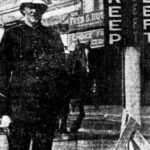

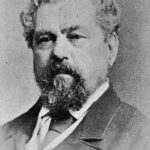
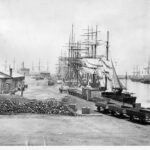
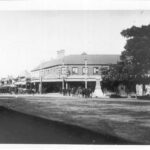
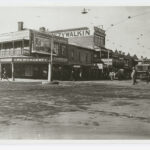
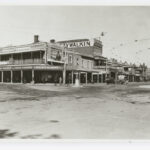

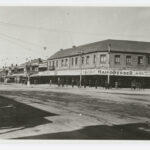
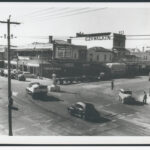

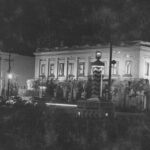
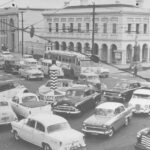
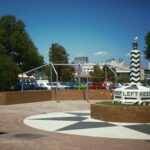
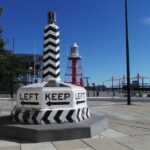
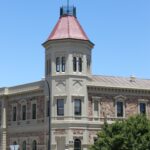

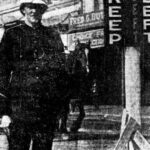

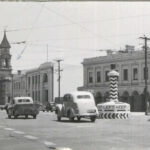
Comments